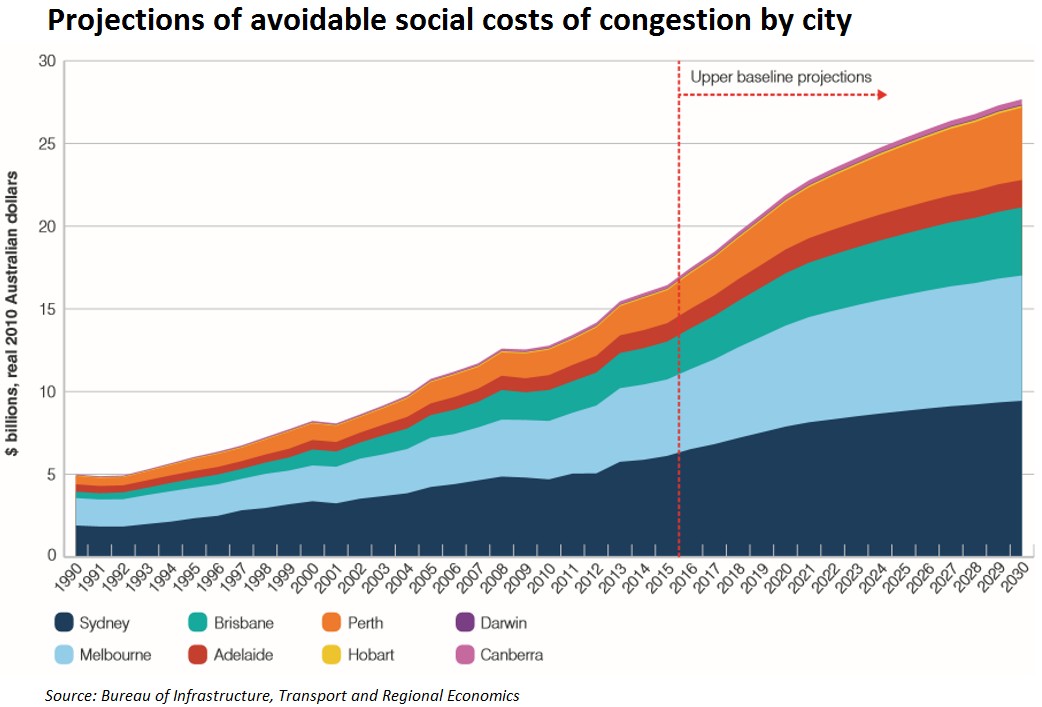The federal Treasury’s deputy secretary Meghan Quinn says Australian resources companies have been more effective in the use of new technologies to boost labour productivity than other sectors of the economy. She has told an OECD productivity forum that Treasury’s analysis suggests that non-mining sectors could lift productivity by 6% if they adopted the managerial practices used in the resources sector. Australia’s productivity growth has averaged 1.7% annually since the mid-1970s, although this has slowed to 1.1% annually over the last five years. From The AFR:
“Treasury analysis suggests that labour productivity in the non-mining sector could increase by 6 per cent if managerial practices rose to those in the mining sector,” she said…
Ms Quinn noted the slowdown in capital investment by business, known as “capital shallowing”, was also a concern because “capital deepening” had accounted for three-quarters of labour productivity growth over the past 30 years…
“The current weakness in labour productivity can be partly attributed to a marked slowdown in investment in capital – so much so that the ratio of capital to labour has fallen – ‘capital shallowing’,” the report said.
Is anyone surprised by this? Australian firms have complained incessantly about ‘skills shortages’ (code for “we want to pay workers less”), resulting in the government opening the immigration floodgates to both temporary and permanent foreign workers. This has resulted in persistent labour oversupply, lowered wages, and eliminated the need for firms to invest in productivity-enhancing labour saving technologies.
Stemming the torrent of migrant workers into the Australian economy would be unambiguously positive for productivity and wages. The least productive businesses would shrink and go bust, transferring workers, land and capital to more productive businesses, thus raising average productivity across the economy. Further, all businesses, observing higher wages, would invest more in labour saving technologies, training and restructuring to raise productivity.
This is how Australia’s labour “market” is supposed to work. However, by permitting the mass importation of foreign workers, the ordinary functioning of the labour market has been circumvented by enabling employers to pluck cheap foreign workers in lieu of raising increases. This has resulted in deleterious outcomes for both workers and the broader Australian economy.
Mass immigration drags down productivity in other areas too. Growing Australia’s population without commensurately increasing the stock of household, business and public capital to support the larger population necessarily ‘dilutes’ the capital base, leaving less capital per person and lowering productivity, resulting in the ‘capital shallowing’ described above. We have witnessed this first hand with the costs of congestion soaring across Australia’s big cities.

Moreover, the cost of retro-fitting Australia’s major cities with infrastructure for the larger populations is necessarily very expensive – due to things like tunnelling and land acquisitions – increasing costs to both productivity and the incumbent population.
Given Australia’s low savings rate, the large levels of housing and infrastructure investment required to keep pace with population growth also pushes up real interest rates. This has kept the Australian dollar elevated for years, thereby making it harder to export from Australia and driving manufacturing closures.
Finally, high immigration has unambiguously lifted housing costs, thereby making it more difficult for younger households to invest in businesses and limiting entrepreneurship. High housing costs also creates barriers to labour mobility and social mobility, both of which matter for productivity.
Currently, there is no economic plan other than to flood Australia’s major cities with hundreds of thousands extra people annually to juice overall economic growth (but not growth per person), to support big business (e.g. the banking, property and retail sectors), and to prevent Australia from going into technical recession (despite growth and income per person stagnating).
Meanwhile, productivity and individual living standards are being crushed via labour market inefficiencies, rising congestion costs, declining housing affordability, rising infrastructure costs (e.g. toll roads and water desalination), environmental destruction, and overall reduced amenity.
Australia’s mass immigration economy is wrecking productivity.

